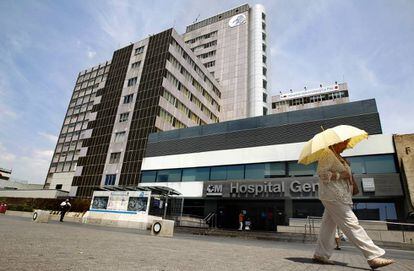200 under observation in Madrid over hemorrhagic fever
Authorities confirm death of a man and are considering isolation for everyone who was in contact with either him or his nurse, who has also contracted the disease


The Madrid government has confirmed that two cases of Crimean-Congo hemorrhagic fever have been detected in the region in the last few weeks, after the National Center for Microbiology sent in the test results for two patients.
The regional health authority is currently monitoring 200 people who have been in contact with the two patients to be diagnosed with the disease: a 62-year-old man who died on August 25, and a nurse who treated him.
Authorities are considering isolating people who have come into contact with either patient, and asking them to remain inside their homes even if they show no symptoms, which take between three and four days to be confirmed.
The virus is primarily transmitted to people from ticks and livestock animals, according to the World Health Organization
Of the hundreds of people under observation, half are health workers from Madrid hospitals Gregorio Marañón and Infanta Leonor, where the patients were treated. The health chief for the region, Jesús Sánchez Martos, has announced that the cases detected in Madrid are the first in Western Europe to have been contracted domestically, and not from travel to a foreign country.
In the case of the 62-year-old man, who died on August 25 at Gregorio Marañón Hospital after having first been treated at Infanta Leonor Hospital, the patient reported having been bitten by a tick while out for a walk in the province of Ávila. He was treated following normal protocols given that he had not travelled to any high-risk areas.
The second patient is a nurse from the ICU at Infanta Leonor Hospital who treated the victim. She was moved on Wednesday night to a high-level isolation unit at La Paz-Carlos III Hospital, with all the appropriate protocols for such a case. Her situation is stable, having “slightly improved” according to the health authorities, who also emphasized the severity of this illness.
Sign up for our newsletter
EL PAÍS English Edition has launched a weekly newsletter. Sign up today to receive a selection of our best stories in your inbox every Saturday morning. For full details about how to subscribe, click here.
That said, the Madrid health authority was keen to convey a message of calm to citizens, stating that “everything is under control and there is no need for alarm.” The transmission of the illness between humans is rare, Martos explained, and contagion outside hospitals or residences is anecdotal.
According to the World Health Organization, the Crimean-Congo hemorrhagic fever (CCHF) virus causes severe viral hemorrhagic fever outbreaks, with a case fatality rate of up to 40%. “The virus is primarily transmitted to people from ticks and livestock animals,” the WHO website explains. “Human-to-human transmission can occur resulting from close contact with the blood, secretions, organs or other bodily fluids of infected persons.”
The illness, the WHO states, is endemic in Africa, the Balkans, the Middle East and Asia, “in countries south of the 50th parallel north.” There is currently no vaccine available for either people or animals.
English version by Simon Hunter.












































